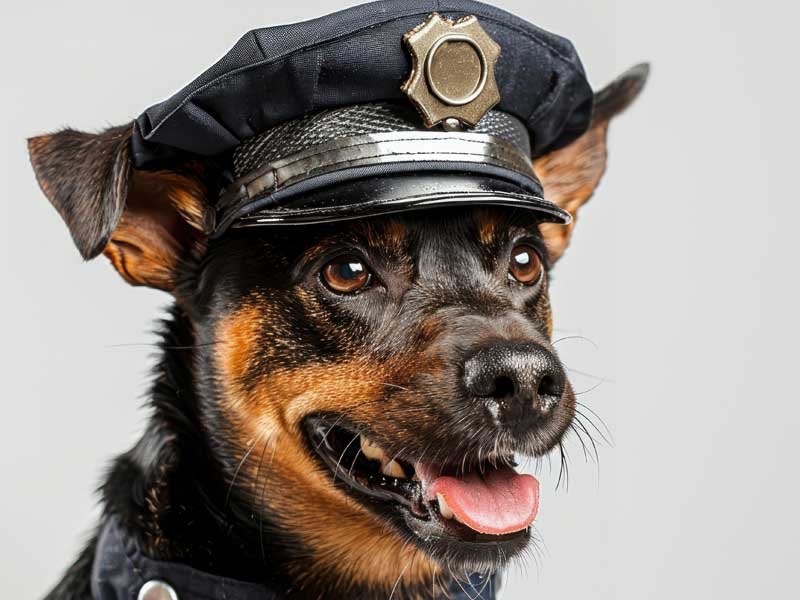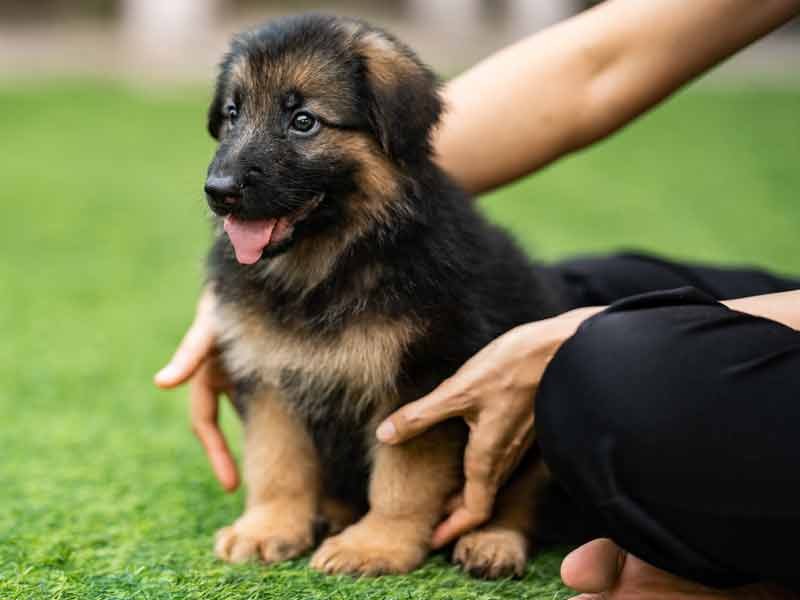Assessing a Puppy’s Potential for Police Work
How do you assess a puppy’s potential for police work? This question taps into a fascinating area that combines animal behavior, training, and the unique requirements of law enforcement. Whether you’re a trainer, law enforcement official, or simply a dog lover, understanding how to assess a puppy’s suitability for such a specialized role can be both rewarding and beneficial.
Understanding the Role of Police Dogs
Police dogs are more than just loyal companions; they serve vital roles in various branches of law enforcement. From narcotics detection to search and rescue, each dog’s specialization can significantly impact operations and outcomes.
Characteristics of Effective Police Dogs
Effective police dogs typically exhibit a range of specific traits. Understanding these characteristics allows you to better gauge whether a puppy may excel in this line of work.
- Drive: High energy and motivation are essential. A dog’s drive can often be observed through playfulness or eagerness to engage in tasks.
- Trainability: A good police dog must learn commands quickly and efficiently. Observing how a puppy responds to basic training can offer insights into their trainability.
- Temperament: Steady and balanced temperament allows dogs to handle stressful situations. Puppies that exhibit calmness can be candidates for further training.
The Importance of Early Assessment
Assessing a puppy’s potential for police work should begin early in their development. The early weeks and months can provide significant insights into a puppy’s character and behavior.
Socialization
Socialization is crucial for any dog, especially those destined for police work. It helps them become comfortable in diverse environments and around different people and animals.
- Exposure: Puppies need exposure to various sights, sounds, and experiences to develop confidence. Places like parks, crowded streets, or community events can serve as excellent socialization venues.
- Structured Play: Engage your puppy in structured play where they can interact with other dogs and people, which promotes good social behaviors.
Early Play and Interaction
Interactions during a puppy’s formative months can influence their potential for police work. Play can be a window into a puppy’s instincts and inclinations.
- Interactive Toys: Use toys that encourage problem-solving. Puppies that spend time trying to obtain a treat from a puzzle toy display characteristics valuable in police work.
- Chase Games: Games such as fetch can highlight a puppy’s drive and determination. A dog that is eager to retrieve can indicate a pursuit drive beneficial for police work.
Conducting Behavioral Assessments
Behavioral assessments can provide a more structured approach to determining a puppy’s suitability for police work.
Common Assessment Techniques
There are several commonly used assessment techniques for evaluating a puppy’s behavior and potential:
| Assessment Method | Description |
|---|---|
| Temperament Testing | Evaluating reactions to various stimuli |
| Obedience Testing | Observing responsiveness to commands |
| Socialization Samples | Interaction with people and other animals |
| Focus Tests | Assessing concentration levels during tasks |
Implementing Behavioral Assessments
When you conduct behavioral assessments, ensure the environment is comfortable for the puppy. A relaxed setting leads to more genuine responses.
- Create a Testing Environment: Conduct assessments in a neutral space free from distractions.
- Be Observant: Pay attention to body language and responses. Subtle cues can reveal a lot about a puppy’s potential.
- Document Observations: Keeping detailed notes will help when comparing candidates.
Key Behavioral Traits to Observe
While assessing a puppy, certain traits will significantly guide your conclusions about their potential for police work.
Assertiveness
Assertiveness in a puppy can translate to confidence in a police dog. It’s essential to discern the difference between healthy assertiveness and aggression.
- Confident Approach: A puppy that approaches new challenges and people with curiosity displays assertiveness that can benefit law enforcement work.
- Playful Aggression: The right kind of playful aggression can reflect a natural instinct to protect.
Drive Evaluation
Drive, particularly in the context of work, is crucial for police dogs. Dogs with a strong drive often display specific behaviors during play and work.
- Motivation for Rewards: Puppies that show eagerness for rewards are more likely to carry that motivation into their work.
- Persistence: Look for puppies that do not easily give up in the face of challenges or obstacles.
Tolerance to Stress
Puppies that handle stress well may transition more effectively into high-pressure environments encountered in police work.
- Sound Sensitivity: Observe how the puppy reacts to loud noises or sudden movements. A balanced response can indicate tolerance for stress.
- Problem Solving Under Duress: Use toys that require problem-solving under stress to assess how well the puppy can maintain focus and composure.


Nature vs. Nurture: The Debate
A significant aspect of assessing a puppy’s potential for police work involves understanding the balance between genetics and environmental influences.
Genetic Predisposition to Work
Certain breeds are predisposed to excel as working dogs due to their history and natural instincts.
- Common Working Breeds: Breeds such as German Shepherds, Belgian Malinois, and Labrador Retrievers are commonly used in police work.
- Selection Process: When selecting a puppy from a specific breed, consider its lineage and background in terms of work and temperament.
The Role of Environmental Factors
While genes lay the groundwork, how a puppy is raised and socialized plays a critical role.
- Early Training Opportunities: Training that is initiated early, even through basic commands, sets the stage for advanced training.
- Life Experiences: Positive experiences can help shape a puppy’s ability to handle complex tasks.
Applying Formal Training Techniques
Once you’ve assessed a puppy’s potential, formal training begins. A structured training approach helps cultivate desired behaviors.
Developing a Training Plan
Design a training plan that includes various elements necessary for police work.
- Basic Obedience: Starting with commands like sit, stay, and come lays the foundation for more advanced tasks.
- Specialized Skills: Begin introducing specialized skills, such as scent detection and tracking, in a controlled manner.
Regular Assessment and Feedback
Throughout the training, it’s important to continuously assess progress.
- Week-by-Week Evaluations: Regular evaluations can highlight areas needing improvement.
- Adjusting Goals: Be flexible in your training goals based on observed progress. Some puppies may excel in certain areas more than others.

Fostering the Right Environment
Creating a supportive training environment is essential for nurturing a puppy’s abilities.
Positive Reinforcement
Positive reinforcement is a cornerstone of effective training. Rewarding desired behaviors makes it more likely they will be repeated.
- Use Varied Rewards: Incorporate different types of rewards, from treats to praise, to keep the puppy engaged.
- Timing of Rewards: Immediate rewards following desired behaviors reinforce the training more effectively.
Socialization Continues
Socialization doesn’t stop after the early stages. Continual socialization will produce a well-rounded police dog.
- Expand Experiences: Gradually expose your puppy to various environments, people, and situations throughout their training.
- Integrate Real-Life Scenarios: Incorporating controlled scenarios similar to those the dog may face in the field can be beneficial.
Monitoring Progress
Regularly monitoring your puppy’s development is key to understanding how they are responding to training and assessments.
Setting Benchmarks
Establish benchmarks that reflect the progress expected at various stages of training.
| Age Range | Benchmarks for Progress |
|---|---|
| 3-5 months | Basic commands learned |
| 6-12 months | Socialization with diverse stimuli |
| 1-2 years | Mastery of specialized skills |
Keeping Records
Documenting your puppy’s progress can highlight strengths and areas for improvement.
- Observation Logs: Maintain logs of behaviors observed during training sessions.
- Progress Reports: Create a summary report on the puppy’s overall development and readiness for police work.
Practical Exercises to Assess Potential
Incorporating basic exercises can provide you with more insights into a puppy’s readiness for police work.
Basic Obedience Trials
Running simple obedience trials helps assess responsiveness and training progress.
- Set Up a Course: Create a small course with different commands to assess the puppy’s reaction and performance.
- Evaluate Results: Analyze how well the puppy follows commands under various distractions.
Scent Detection Practices
Scent detection is often a significant part of police dog work. Simple exercises can help assess a puppy’s natural ability in this area.
- Hide and Seek: Hide an object with a strong scent and encourage the puppy to find it. Observe their enthusiasm and ability to track scents.
- Variety of Scents: Gradually introduce different scents to gauge broader tracking abilities.
The Role of Continuous Development
Even after initial assessments and training, continuous development is vital for a puppy’s success in police work.
Ongoing Training
Keep up ongoing training to ensure your puppy remains sharp and ready for their future tasks.
- Refreshers on Skills: Regularly review training lessons to maintain skills.
- Advanced Techniques: Introduce new skills as the puppy progresses, ensuring their training never stagnates.
Real-World Exposure
Continued exposure to real-world scenarios allows your puppy to learn how to handle practical situations they might face as police dogs.
- Controlled Public Engagements: Taking them to controlled public events can familiarize them with crowds and different stimuli.
- Field Trips: Organized field trips to varied environments can prepare your puppy for real police work scenarios.
Conclusion
Assessing a puppy’s potential for police work is an intricate process involving early evaluation, training techniques, and a deep understanding of both nature and nurture. By observing behavioral traits, implementing structured training, and continually assessing progress, you can help shape a puppy into an effective working dog. Ultimately, creating a supportive learning environment will lead to a successful journey into the specialized world of police work.
If you’ve got a puppy with the right traits, and you’re committed to the training process, you could be on the path to raising a future hero in your community.







